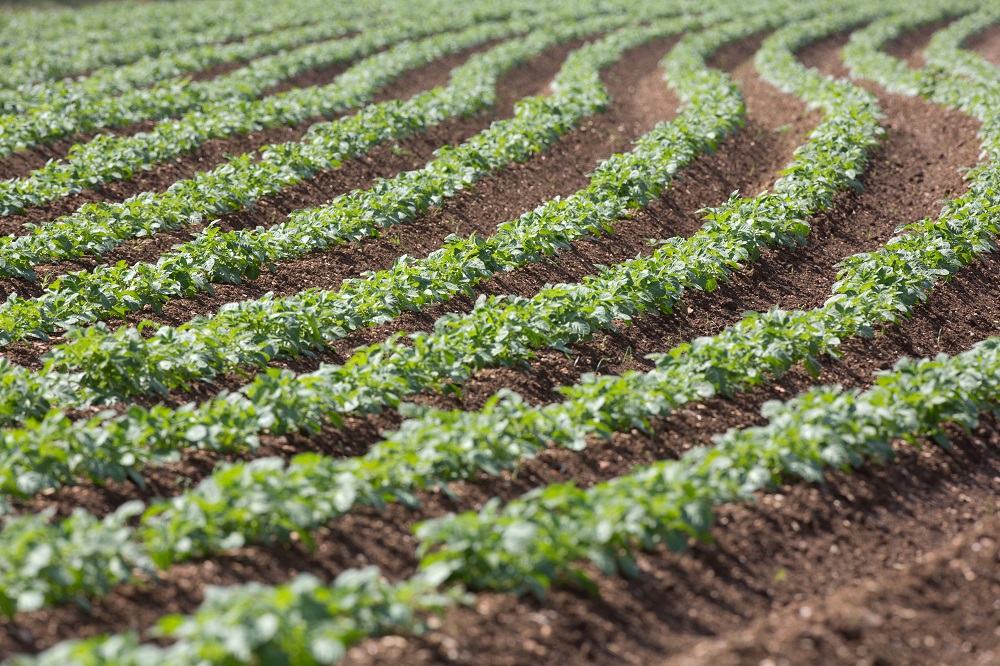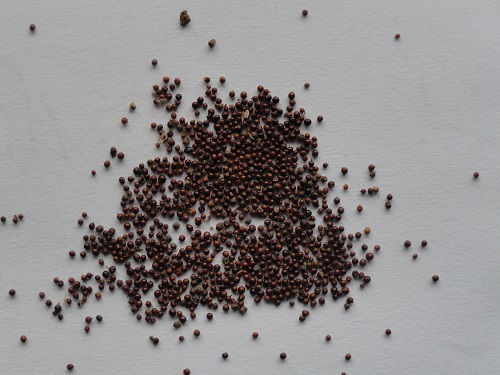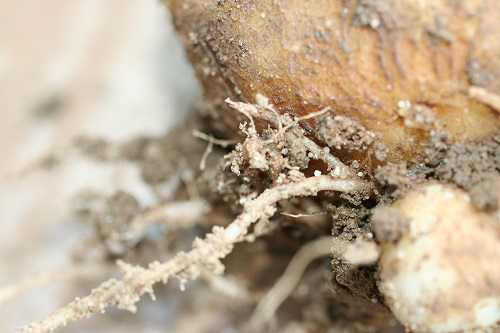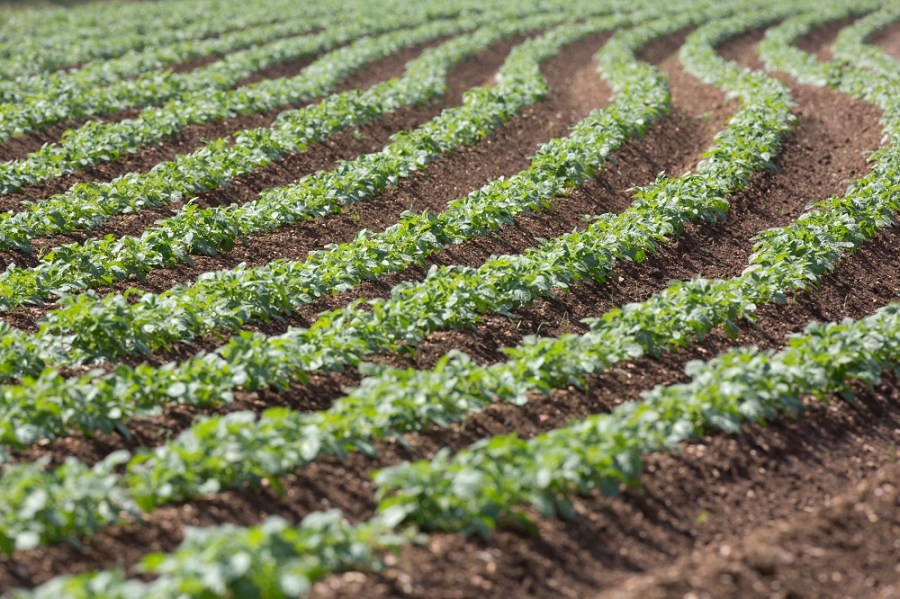
It won’t come as a surprise that the PCN population has been changing. Results of a new survey reveal the new dynamics and much more besides. CPM asks key scientists about their findings and how their research will help the industry.
The dominance of G. pallida is worrying and highlights the need for breeding for resistance to it.
By Lucy de la Pasture
AHDB has estimated that the potato cyst nematodes, Globodera rostochiensis and Globodera pallida, cause annual crop losses to the value of £25.9 million. Control measures focus on soil testing for the presence of eggs in cysts and application of a nematicide where appropriate, combined with the use of longer rotations and varieties with resistance genes.
The last survey of England and Wales looking at the relative occurrence of the two species of PCN was published as long ago as 2002, using samples collected in 1998-99. At that time, G. pallida had just overtaken G. rostochiensis as the dominant species, at 67% (in pure populations) with one in four fields having mixed populations.

Soil samples contain cysts (shown above) including other types from nematodes that don’t feed on potatoes, so correct identification in the lab is important.
Updating the information on the field dynamics of PCN species is important to both growers and potato breeders because there are implications to current variety choice, as well as breeding future varieties with the appropriate resistance genes, explains Sue Cowgill, AHDB-Potatoes crop protection senior scientist.
The species of PCN present has implications that go beyond variety choice, she highlights. Differences in the lifecycles of G. pallida and G. rostochiensis make a difference to the effectiveness of the methods used to manage them. G. pallida can hatch at lower temperatures and has a more prolonged hatching period which can affect nematicide efficacy and there are fewer potato varieties available with resistance genes to G. pallida, particularly in the fresh sector.
This year, AHDB has funded a PCN survey of England and Wales to bring the population information bang up to date. The stratified survey was designed and carried out by Harper Adams PhD student, Katarzyna (Kasia) Dybal, with Dr Matthew Back acting as her director of studies.

G. pallida can hatch at lower temperatures and has a more prolonged hatching period which can affect nematicide efficacy.
“We based the survey on AHDB planting data with the aim of collecting 500 samples. The sample numbers collected in each county were weighted by the area of potatoes grown so that more samples were taken in counties where potato growing is particularly significant,” explains Kasia Dybal.
Finding and contacting sufficient growers proved to be a challenge at this stage of the project, especially in counties where fewer potatoes are grown, she recalls.
“I was able to collect 423 samples in England and Wales, with a further 68 samples obtained from official testing by the government’s Animal and Plant Health Agency, making a total of 491 samples. Each soil sample consisted of 50 cores taken in a rectangular grid pattern to provide approx. 2kg of soil.”
The survey results reveal some interesting information, with a drop in the total number of sites infested with PCN, down to 48% compared with 64% in the historic 2002 survey. The cysts in every sample were speciated, which showed a dominant population of G. pallida (89%), with just 5% of samples containing G. rostochiensis and a further 6% of samples contained a mixed population.
The rise in G. pallida, together with a drop in the proportion of samples with a mixed species population points to the dominance of the species, explains Matthew Back. But it was the fall in the number of sites infested that caused some confusion as to the reason why.
“It may be due to sites that were previously G. rostochiensis only sites and a growth in the number of varieties with resistance to this species. The most popular variety grown is Maris Piper, which has the H1 gene conferring resistance to G. rostochiensis but not G. pallida so would have led to a shift in population,” he explains.
“The dominance of G. pallida is worrying and highlights the need for breeding for resistance to it, as well as the importance of testing for soil density of PCN and species present before selecting variety,” says Matt Back.
It’s often said that the results from PCN samples are only as good as the quality of the sampling from the field and Science and Advice for Scottish Agriculture (SASA) are in the process of looking at the soil-sampling process as part of an ongoing AHDB project.
“Unlike in seed crops, there isn’t a prescriptive description of how to sample fields for PCN in ware crops. The SASA project will be completed early in 2017 and new guidelines will be coming out through the Nematicide Stewardship Programme (NSP),” says Sue Cowgill.
She also believes it’s important for growers to have confidence in the ability of the lab analysing the samples to provide an accurate result. “Soil samples contain other types of cysts from nematodes that don’t feed on potatoes so it’s important for labs to be proficient in their identification of PCN,” she says.
With this in mind, AHDB has put together an initiative where the staff of commercial laboratories are offered an identification refresher course. It’s been well received, says Sue Cowgill, adding that a proficiency testing scheme is now under discussion which would help assure growers that labs are performing at the same level of expertise.
The tests that are currently available for PCN still provide only part of the picture and there’s further valuable information within samples that could help growers with PCN management decisions. Kasia Dybal’s PhD research is seeking to develop commercial lab tests so the full value of PCN samples can be realised. One of the aspects she’s looking at is the viability of eggs, which would help growers assess the likely impact of their PCN population.
Tests for viability of eggs that have already been developed are being assessed alongside a new test Kasia Dybal is working on. She’s discovered that hatching the eggs gives the best correlation with expected viability but the accuracy still isn’t clear because there’s no gold-standard test to compare results with. The other major drawback with the hatching test is that results take up to nine weeks, she points out.
But there’s a new test she’s developing, and that’s showing promise. “The membrane of the egg contains a substance in the perivitelline layer called trehalose. When the eggs hatch, trehalose is released and can be detected in the assay. The number of eggs hatching is related to increases in the levels of trehalose in the assay, which is how the test gives a measure of egg viability,” she explains.
“It’s too early to draw conclusions. The next step is to compare it with the results from other testing techniques. But the potential is there to offer a quick and cost-effective viability test.”
In her further work, Kasia Dybal is investigating the virulence of the PCN population, which is determined by the pathotype present. The importance of this information is that the pathotype reflects the ability of specific PCN populations to multiply on potato varieties based on their resistance genes.
“With some varieties, there’s information available on resistance to PCN pathotypes based upon a scheme that was introduced in 1977. But it’s a complex situation because some of the pathotypes overlap. For instance, G. pallida has three pathotypes, but Pa2 and Pa3 can’t be easily distinguished.”
The investigation into the pathotypes present in the survey population has been carried out using a glasshouse phenotyping experiment. Three populations of G. pallida from the James Hutton Institute (JHI) collection are employed as standards and nine populations from the PCN survey are compared across a range of potato genotypes, that include a susceptible control and genotypes that represent the main sources of resistance for G. pallida.
“The aim is to see how well the survey population samples can multiply on different varieties so we can determine which pathotypes are present,” explains Matt Back.
But the research into pathotype goes even further. Earlier this year, researchers at JHI announced a significant scientific breakthrough, developing a technique that can ‘type’ thousands of field samples simultaneously, explains Dr Sebastian Eves-van den Akker, leading author of the study.
“SASA annually undertakes national DNA diagnostic tests to determine the presence of PCN in potato seed and ware land by extracting DNA from soil floats. These DNA samples provide a unique resource for monitoring the distribution of PCN and further interrogation of the diversity within species,” he says.
Having sequenced the genome of G. pallida, researchers identified a genetic marker in the mitochondrial gene cytochrome B. This marker is descriptive of three “mito-types” consistent with the three major introductions of G. pallida into the UK, he explains.
By combining this marker, with the annual SASA survey samples, researchers showed it’s possible to build a map of the distributions of each type of G. pallida across a country.
“We found most fields contained a single mitotype but 20% of fields had a mixed mitotype, with 3% having all three mitotypes present. We also identified hotspots of types within fields which indicates that the pathoscape isn’t homogenous across mixed fields.
“We also found evidence in favour of hybrid populations. We don’t yet know how the virulence of these hybrid populations would differ from their parental populations,” he explains.
The next step will be to couple this method of “typing” thousands of fields with the pathotype work of Matt Back and Kasia Dybal, adds Sebastian Eves-van den Akker.
“All 249 samples from Kasia’s survey that contained PCN have been sequenced by the researchers at JHI and we’re awaiting the results. In the longer term, it’ll be important to understand the relationship between mitotypes and the resistance genes available in potato varieties,” explains Matt Back.
Pinpointing PCN requires precision
Agronomist Dr John Keer, of Richard Austin Agriculture, has been involved with soil sampling and PCN analysis for many years. With his hat on as a member of the Nematicide Stewardship Programme, he says that one of the areas they identified early on was agronomist confidence in the PCN tests being carried out in commercial laboratories.
“I attended the identification course with colleagues from RAA laboratories and found the ID refresher course at SASA was really useful, with good practical sessions and a wide range of samples of the less common cyst nematodes that could potentially be confused with PCN,” he says.
“It’s important for agronomists to remember that testing PCN is an advisory test and there’s always a level of subjectivity so results can only be regarded as an estimate of PCN density. Even so, the largest errors occur not in the lab, but at the sampling stage in the field.”
Because PCN populations are always unevenly distributed, John Keer advises growers should sample using a 1ha grid system, ideally using GPS so that the variable PCN density can be accurately mapped and results give a clearer idea of the distribution of PCN in fields,” he says, adding that it’s a sampling protocol he’s developed a huge amount of confidence in.
“This mapping information enables PCN management to be altered across the field, with some growers growing different varieties within the same field to utilise resistance as a means of managing the PCN population.”
Results from PCN samples are given as both cysts and viable eggs per gram of soil. While numbers of cysts indicate an historic presence of PCN, the number of viable eggs is the most important measurement and should be used to determine agronomic decisions, such as whether to treat with a nematicide, stresses John Keer.
“Currently in the lab we examine eggs under the microscope and make a decision as to their viability. A new more definitive test for viability would be incredibly useful and another step towards increasing the accuracy of our results,” he says.
Growers would be well advised to go on and have samples speciated by the lab once viable eggs are found, he recommends. In his region, the silts in South Lincs have grown so much Maris Piper and Cara that Globodera pallida is dominant, whereas in Norfolk and Suffolk a wider range of potato varieties have been grown and the PCN species distribution is much more varied.
Research round-up
AHDB project 115R471, Characterisation of Potato Cyst Nematode Populations in Great Britain for Sustainable Crop Management (PhD research), ran from Oct 2013 to Sept 2016. Its aim was to conduct a survey of UK PCN populations to produce a current distribution map and using the samples from the survey, examine the virulence of G. pallida populations using different sources of resistance. The PhD also investigates methods for assessing PCN viability with the aim of developing a rapid, universal test. It’s being conducted at Harper Adams University in collaboration with The James Hutton Institute.




